Can I Use a 12V Solar Panel to Charge a 48V Battery
Using a 12V Solar Panel to Charge a 48V Battery
If you're diving into solar energy, one of the most common questions is: can you use a 12V solar panel to charge a 48V battery? This is especially relevant for those trying to repurpose existing solar panels for higher-voltage battery systems, such as off-grid solar setups or electric vehicle battery banks. The short answer is yes, but with important conditions and components. Understanding how to safely and effectively connect a 12V solar panel to a 48V battery is critical to avoid damaging your equipment or reducing energy efficiency.
This article will guide you through everything you need to know about using a 12V solar panel to charge a 48V battery—how it works, what hardware is needed, and how to maximize performance and safety.
- Understanding the Basics of a 48V Battery System
- Can a 12V Solar Panel Charge a 48V Battery?
- Key Components Needed to Charge a 48V Battery with a 12V Solar Panel
- Limitations and Considerations When Using a 12V Panel for a 48V Battery
- Wiring Configurations to Charge a 48V Battery
- Choosing the Right Solar Panel for Your 48V Battery
- Calculating How Long It Takes to Charge a 48V Battery with a 12V Panel
- Advantages of Charging a 48V Battery with a 12V Solar Panel
- Safety Tips When Charging a 48V Battery
- Real-World Use Cases and Testimonials
- Upgrading From 12V to a Full 48V Solar System
- Frequently Asked Questions
- Charging a 48V Battery with a 12V Solar Panel
Understanding the Basics of a 48V Battery System
Before you connect anything, it's vital to understand what a 48V battery system is and how it functions in solar setups.
What Is a 48V Battery?
A 48V battery is a battery bank with a nominal voltage of 48 volts, typically made up of several smaller battery cells or modules in series. It's widely used in larger energy systems, including:
Off-grid solar power installations
Electric bikes and scooters
Telecommunication systems
Backup power systems for homes or businesses
The higher voltage allows for more efficient energy transfer over long distances and reduces current, which minimizes energy loss and the need for thick cabling.
Why Use a 48V Battery Instead of 12V or 24V?
There are several reasons why someone would choose a 48V system over a 12V or 24V setup:
Improved efficiency: Higher voltage reduces current, which reduces resistive losses.
Support for larger loads: Ideal for high-power applications.
Better compatibility with inverters: Many large-capacity inverters are designed for 48V input.
Can a 12V Solar Panel Charge a 48V Battery?
Yes, but not directly. A single 12V solar panel cannot provide the necessary voltage to charge a 48V battery on its own. However, with the right setup and components, it is entirely feasible.
Understanding Voltage Mismatch
A 12V solar panel typically produces a voltage between 16V and 22V under open-circuit or peak sunlight conditions. A 48V battery requires a charging voltage of around 54.6V for lithium-ion batteries and up to 58.8V for lead-acid batteries.
The Role of a Boost MPPT Charge Controller
To bridge this voltage gap, you need a boost MPPT (Maximum Power Point Tracking) charge controller. This type of controller is designed to increase the voltage from the panel and convert it to the correct charging voltage required by the 48V battery.
>>See also Guide to 12V Car Battery Sizes and How to Choose the Right One for Your Vehicle
Key Components Needed to Charge a 48V Battery with a 12V Solar Panel
To successfully charge a 48V battery using a 12V solar panel, you'll need more than just the panel and the battery. Here's a list of essential components:
1. Boost MPPT Charge Controller
This device takes the lower voltage from the solar panel and boosts it to the appropriate level needed to charge your 48V battery. It also optimizes power extraction from the panel.
2. Proper Wiring and Connectors
Use appropriately rated wires and connectors that can handle the current and prevent energy loss. Keep wire lengths as short as possible.
3. Battery Management System (BMS)
Especially for lithium batteries, a BMS is crucial for monitoring cell voltage, temperature, and balancing cells.
4. Fuses and Circuit Breakers
For safety, include overcurrent protection between the panel, controller, and battery.
Limitations and Considerations When Using a 12V Panel for a 48V Battery
Using a lower-voltage panel to charge a higher-voltage battery involves trade-offs. Here are some critical factors to consider.
Efficiency Loss
Using a boost converter means some energy is lost during voltage conversion. Typically, a good MPPT controller is around 95% efficient, but losses are inevitable.
Limited Current Output
Because a single 12V panel produces limited current, charging will be slow. It might take several days of full sun to provide a meaningful charge to a large 48V battery.
Best Use Scenarios
This setup is ideal for:
Small backup systems
Experimental or DIY solar kits
Learning and training purposes
It is not recommended for high-capacity daily energy needs unless multiple 12V panels are combined.
Wiring Configurations to Charge a 48V Battery
There are different wiring methods that allow you to use 12V panels more effectively with a 48V battery.
Single Panel with Boost Controller
The simplest setup:
One 12V panel connected to a boost MPPT controller
Controller outputs to 48V battery
This works but is very slow unless the battery capacity is small.
Series Connection of Panels
Connect four 12V panels in series to reach ~48V:
12V + 12V + 12V + 12V = 48V nominal
No boost controller needed; a regular 48V MPPT controller is sufficient
Faster charging and better efficiency
This is the recommended configuration for practical applications.
Choosing the Right Solar Panel for Your 48V Battery
Not all 12V solar panels are created equal. When charging a 48V battery, choosing the right panel is key.
Panel Wattage
The higher the wattage, the better. A 100W panel will produce about 5–6A at peak sunlight, which is very low for a 48V battery.
Voltage at Maximum Power (Vmp)
Choose a panel with Vmp as high as possible—around 18V is common for "12V" panels. This gives the boost converter more to work with.
Quality and Efficiency
Look for monocrystalline panels with high conversion efficiency and durable construction.
Calculating How Long It Takes to Charge a 48V Battery with a 12V Panel
Step-by-Step Calculation
1.
Panel output: Assume a 100W 12V panel generates about 5.5A at 18V
2.
3.
Power input: 5.5A × 18V = 99W
4.
5.
Accounting for MPPT efficiency: 99W × 95% ≈ 94W
6.
7.
Charging a 48V battery at 94W: 94W ÷ 48V ≈ 1.95A charging current
8.
If you have a 48V 100Ah battery (4800Wh), it would take:
4800Wh ÷ 94W ≈ 51 hours of peak sunlight
This is a very slow process, hence the need for more panels or higher-wattage options.
Advantages of Charging a 48V Battery with a 12V Solar Panel
While it's not the most efficient setup, there are advantages:
Cost-effective: If you already have a 12V panel, it saves you money
Scalable: You can add more panels later
DIY friendly: Great for experimentation and learning
Portable systems: Useful in small mobile solar setups
Safety Tips When Charging a 48V Battery
Always prioritize safety to avoid accidents or equipment damage.
Monitor Battery Temperature
Especially for lithium-ion batteries, overheating can lead to failure or fire.
Never Mix Voltages Without a Controller
Don’t connect a 12V panel directly to a 48V battery—this won’t charge the battery and can damage both.
Disconnect When Not in Use
Use disconnect switches or quick-release connectors for maintenance or transport.
>>See also Understanding Safe Overcharge Voltage Limits for 12V Batteries and How to Prevent Damage
Real-World Use Cases and Testimonials
Many DIYers and hobbyists have successfully used 12V panels to charge 48V systems in creative ways:
Portable solar generators
Emergency backup systems
Education and testing rigs
Rural or off-grid field experiments
These examples show that while not ideal, this method has practical value.
Upgrading From 12V to a Full 48V Solar System
Eventually, you may want to upgrade to a full 48V-compatible system:
48V panels or multiple 12V panels in series
48V inverter and MPPT controller
Larger battery bank with proper BMS
This results in better efficiency, faster charging, and more reliable performance for high-demand applications.
Frequently Asked Questions
Can I use two 12V solar panels to charge a 48V battery?
You would still fall short of the necessary voltage. You need at least four in series or a boost converter.
What is the best MPPT controller for this setup?
Look for boost MPPT controllers that specifically state support for 12V input and 48V output. Brands like Victron, EPEver, and Renogy have good reputations.
Will it damage my 48V battery?
Not if done correctly with a proper controller. Never connect directly without voltage conversion.
Charging a 48V Battery with a 12V Solar Panel
Charging a 48V battery with a 12V solar panel is entirely possible, but it requires careful planning and the right equipment. A boost MPPT controller is essential to increase the panel's voltage, and understanding the limitations in power and efficiency is critical. While this approach isn’t suitable for high-demand systems, it offers a cost-effective entry into solar power or a learning opportunity for DIY enthusiasts.
If you're planning to build or modify your solar setup, always start with safety, scalability, and energy efficiency in mind. With the right components, even a humble 12V panel can play a role in charging your 48V battery system effectively and safely.

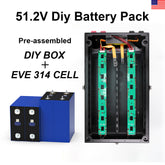

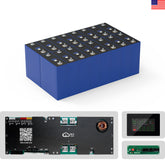

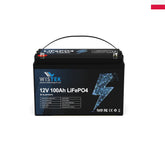
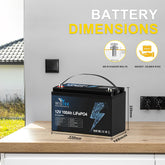

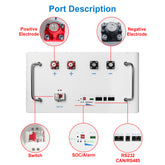
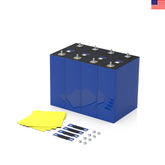
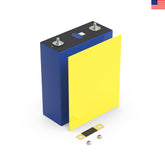
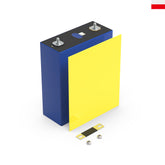

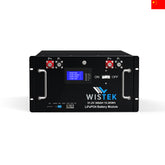
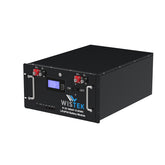
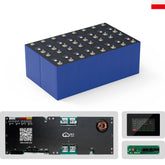








Leave a comment
All blog comments are checked prior to publishing